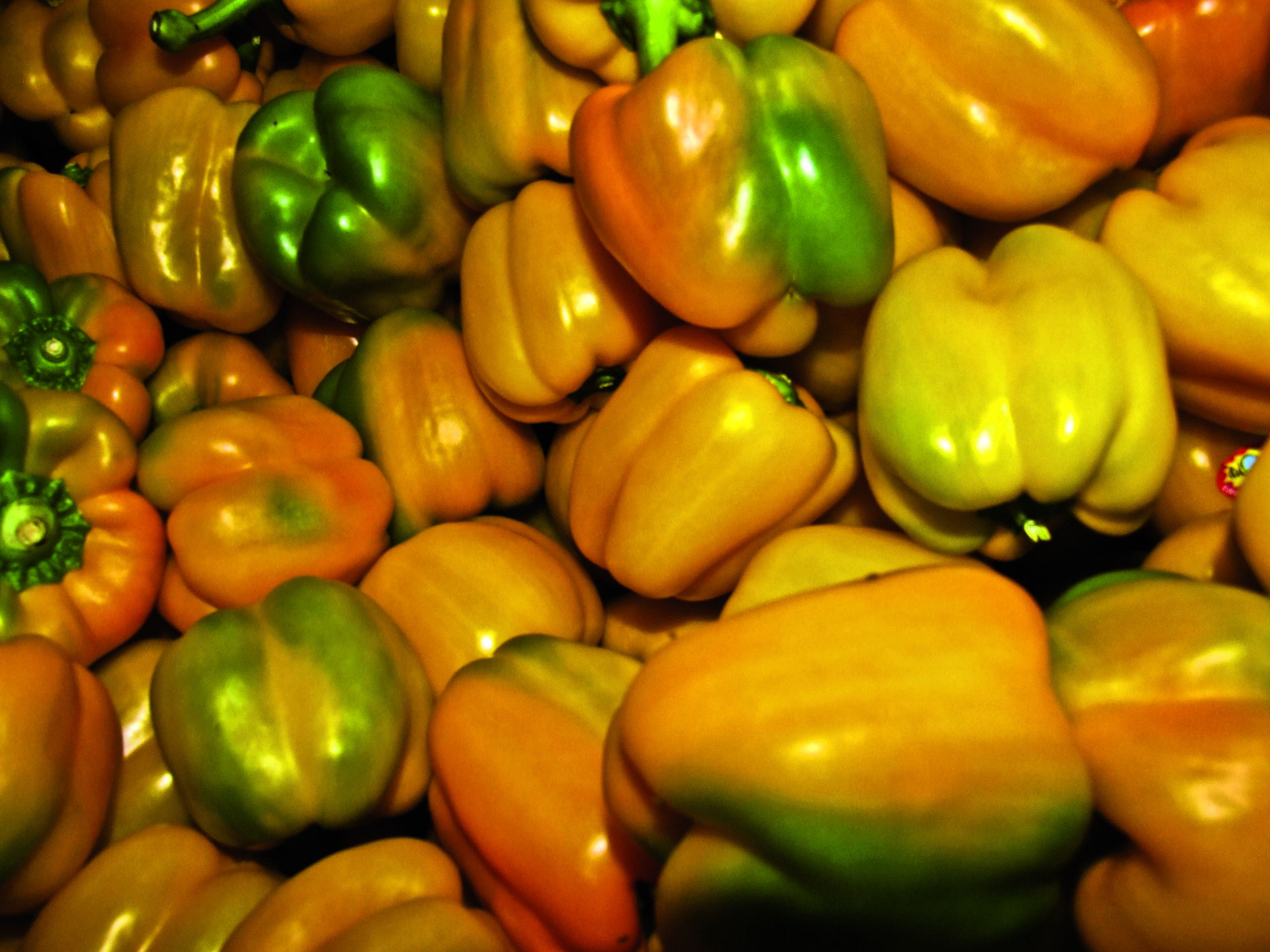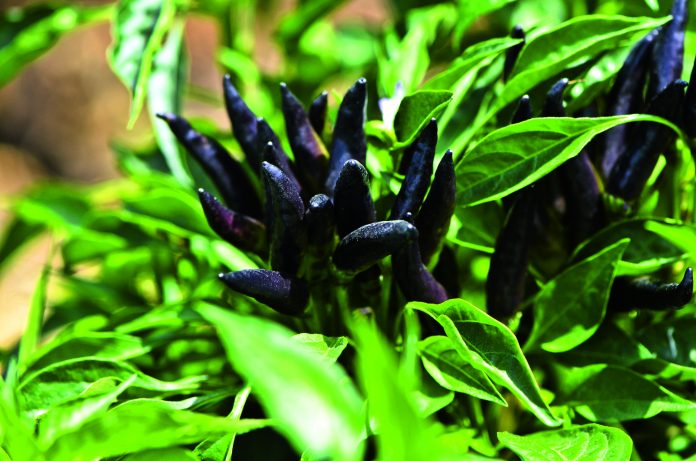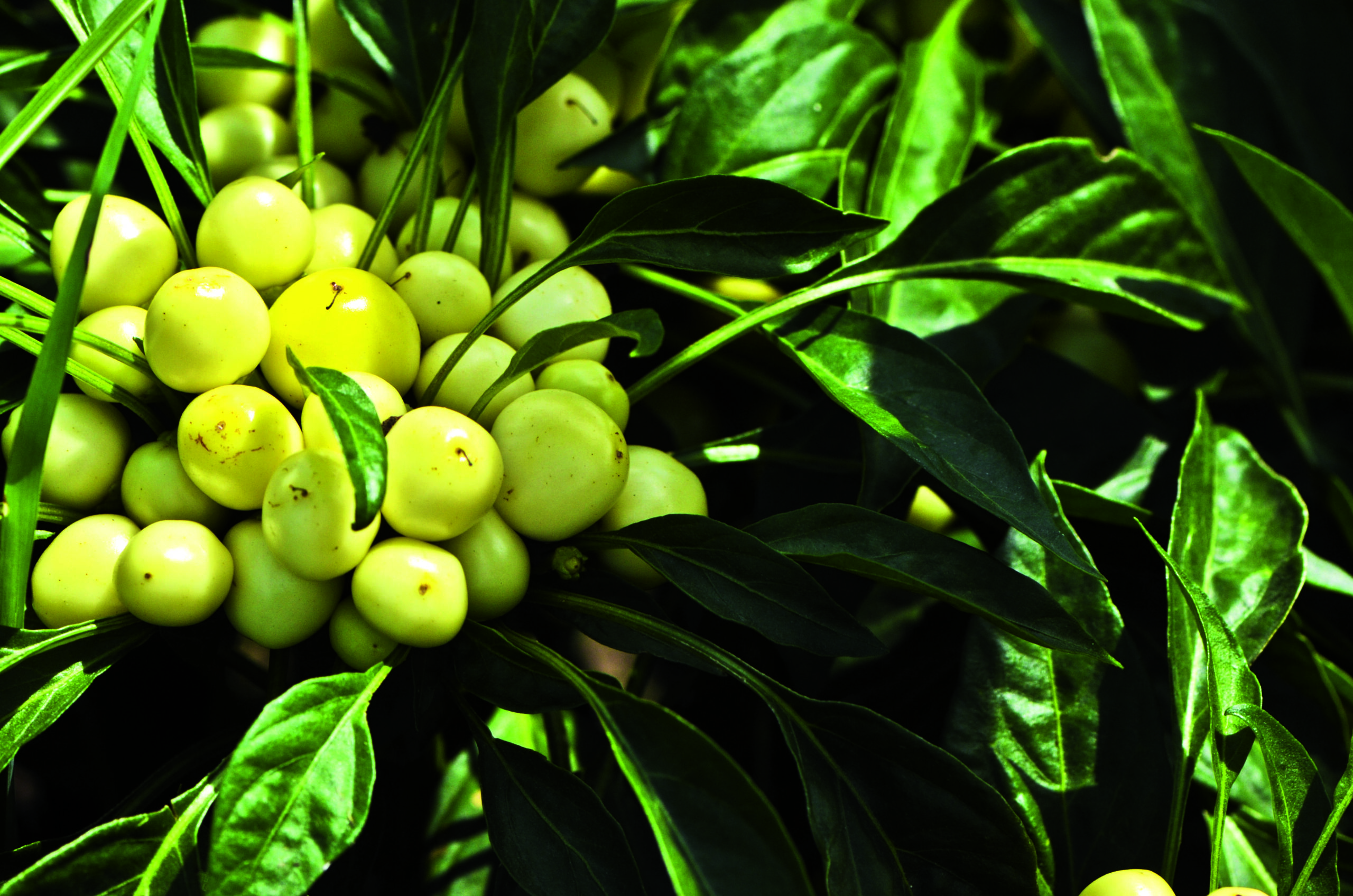Text & Photos by Rachel Einav
The pepper belongs to the Solanaceae family, from which we have also acquired the tomato, the potato and the eggplant. The variety of peppers is still a point of contention amongst taxonomists, but none of them argues the delicious taste – neither the tempestuous nor the placid.
Most researchers associate the various strains to one species – Capsicum annuum. However, in spite of the Latin name, which indicates that the pepper’s forefathers are annuals, most plants are biennial, and – with loving care – often even more prolific. Contemporary estimates account for about 30,000 strains of pepper belonging to 30 different species. Only five of these are the forbearers of edible peppers, and other types only grow only in South America – primarily in Brazil. Some have only recently been discovered, and some may still be waiting to be discovered. We can only hope that in the future, developers will find the time to grow the lesser-known ones, as well.
Scientists already know all there is to know about the genome of the pepper. Wild peppers may be identified based on the number of chromosomes (2n = 24 or 2n = 26). Cultivated varieties show multiple genomes, and thus the diversity of this fruit. I won’t presume to nail down the systematic of this wondrous species, since new, wild varieties are being discovered continuously, and genetic research continues to seek a relationship between them. Unlike other domesticated species (such as corn) whose ancestors have disappeared – possibly due to over-harvesting – wild peppers can still be found in the jungle.
Another species of pepper, whose definition is unchallenged – insofar as its commercial name is concerned – is Tabasco (Capsicum frutescens), its flowers green and anthers purple. Tabasco is one of the hottest varieties of peppers. It has not only maintained its independence but also its position in Nature, growing mainly in Central America. Regarding the sauce so slyly presented in its little green and red bottles, its manufacture is also unique – the peppers are smoked rather than cooked. Thus, the pungency is preserved and the precise recipe remains a secret told to none.
As previously mentioned, the pepper hails from the New World – Brazil and Colombia – where the original peppers are still cultivated and from which so many varieties have spawned and continue to be derived. The first mention of peppers is ascribed, naturally, to Christopher Columbus. The Italian historian Peter Martyr d’Anghiera was the first to chronicle the relationships between the Europeans and the American natives. In a missive dated September 1493, he mentions the pepper.

For the rest of this article (Asian Geographic No.87 Issue 2/2012 ) and other stories, check out our past issues here or download a digital copy here












